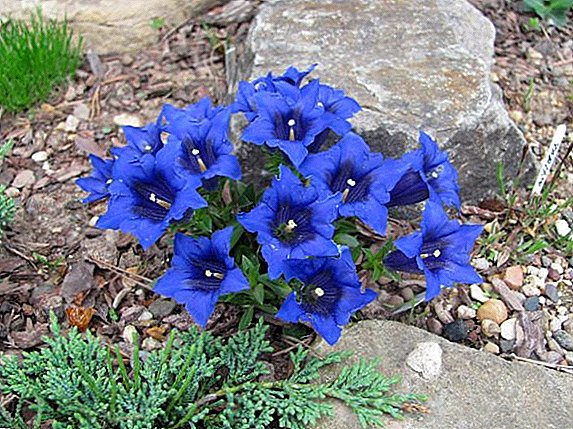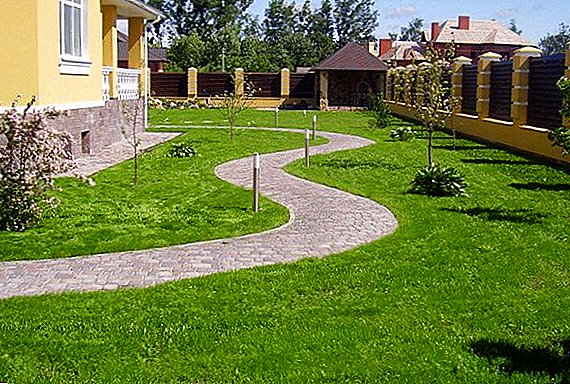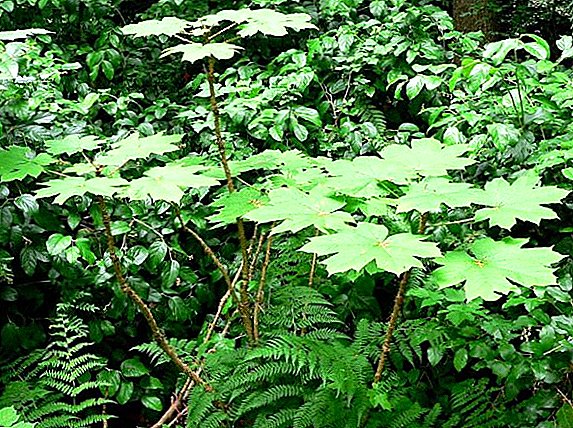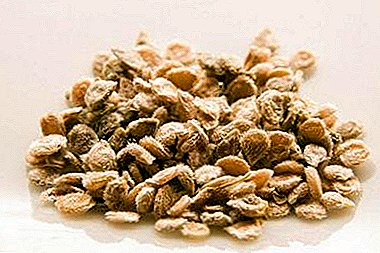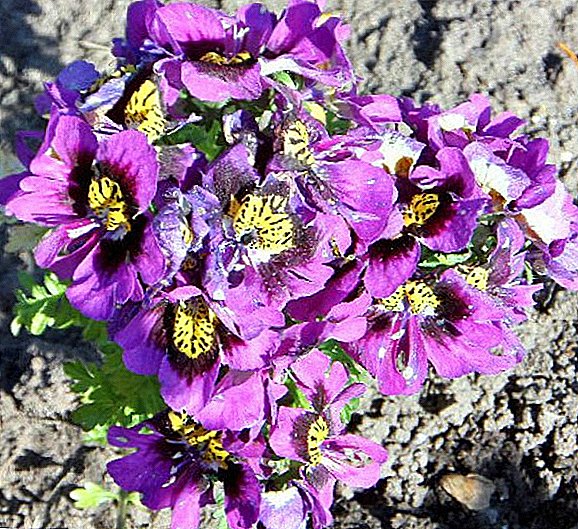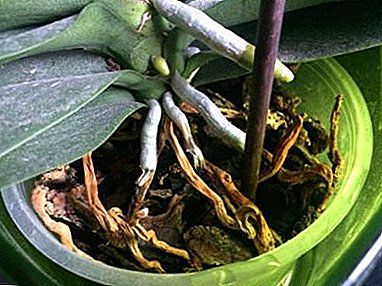
Often, growers, even with great experience in growing orchids, face some problems. Often they relate to the root system of this exotic beauty. A richly flowering plant becomes sluggish, the leaves start to wrinkle, the flowers fall, and the roots change color. As for beginners, this state of the plant leads to panic. If you do not take measures to save, then the beauty will just die. Therefore, we will consider in detail whether it is possible to trim the roots during orchid transplantation and what should be taken into account.
Features of epiphytes
The main part of orchids, cultivated at home - epiphytes. This means that in nature they grow on the branches and trunks of trees. The roots of the plant are constantly on the air. If an ordinary plant is placed in such conditions, it will simply dry for several hours.
What is the main difference? The orchid on the roots has a special layer - velamen, which protects them from drying out and damage, thanks to its structure, it is able to absorb moisture directly from the air.
If there is not enough moisture, the root begins to dry out externally, becomes thin and wrinkled. - but this does not mean that he died.
Preparation and disinfection
 If the plant requires a transplant, then you need to perform this action with great care, trying not to damage the root system. Once the orchid is removed from the pot, the roots are washed with warm, running water and inspected. All damaged areas are removed with a sharp disinfected pruner, treated with ash or ground cinnamon. After that leave to dry. After 5-7 hours, the plant can be placed in a special substrate.
If the plant requires a transplant, then you need to perform this action with great care, trying not to damage the root system. Once the orchid is removed from the pot, the roots are washed with warm, running water and inspected. All damaged areas are removed with a sharp disinfected pruner, treated with ash or ground cinnamon. After that leave to dry. After 5-7 hours, the plant can be placed in a special substrate.
How to transplant if the roots grow from the pot?
Beginning growers do not know what to do with the donated plant, if the roots have grown and stick out straight from the pot. Can they be shortened or just cut? Sometimes it is necessary to do this, for example if:
- the roots have dried out;
- rotting appeared;
- if the volume of the roots is very large, they are strongly intertwined and therefore the moisture does not flow well to the plant.
Important! Without risk to the plant, only 1/3 of the total volume of the roots can be removed, otherwise the flower will need resuscitation.
How to determine the pathology?
Often the roots of orchids that grow at home are subject to pathological changes. They not only change color, but also their appearance - they darken and begin to rot.
There are 2 ways to distinguish healthy roots from those affected:
- Colour. A healthy horse orchid system is covered with a protective, spongy substance - belamen, which has a bright white shade. Also, the roots may be green or silver. If the color has changed, then this is the first sign that the plant begins to hurt.
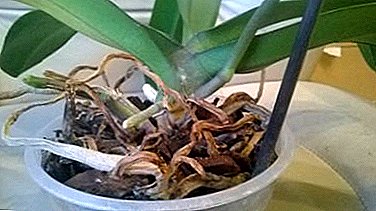 If the plant does not have enough sunlight, then the roots can change their color to yellow - but at the same time they remain healthy.
If the plant does not have enough sunlight, then the roots can change their color to yellow - but at the same time they remain healthy. - To the touch. It is enough to squeeze the spine slightly - elastic, then everything is in order. But if mucus is emitted from the root and it is easily crushed, then it is rotten.
Do not rush to cut the roots, if they are normal color, but shriveled and thin. Dip the orchid roots in warm water for an hour, they will be saturated with moisture and become normal.
What causes damage?
Be very careful when transplanting plants., as damage to the roots can lead to negative consequences: rotting at the site of damage, a third-party infection can also get into the wound.
What can be processed?
Used drugs
The orchid is prone to many types of infections and diseases. To prevent the plant from getting sick, you can use the following formulations once a month:
- "Fitosporin" - helps in the treatment of orchids for viral diseases and as a prophylactic agent for transplanting plants with root damage.
- "Chlorhexidine " - destroys all diseases caused by pathogenic bacteria.
- "Fundazol" - a means of universal exposure, before planting an orchid in a new substrate, you can simply powder it with powder.
- "Oxy" - fights all rot and other orchid diseases.
- "Phyto Plus" - this drug copes well with powdery mildew and rot.
- "Topaz" - Rescues from rust and mealy dew.
- "Streptomycin sulfate" - well help with bacterial infections, with 1 vial diluted per liter of water.
- "Immunocytofit" - an immunomodulator for an orchid that can suppress many diseases.
Reference! But the best prevention is considered strict adherence to the rules of plant care.
Powders and drying
 After pruning, all wounds must be processed to prevent diseases, infections and decay. Apply:
After pruning, all wounds must be processed to prevent diseases, infections and decay. Apply:
- fungicide formulations;
- wood ash powder;
- crushed activated carbon;
- Zelenka;
- manganese solution;
- cinnamon powder.
After processing, the plant is left in the air for 5-7 hours to dry the roots, and only then placed in a new substrate.
Step-by-step instruction
What if there is no root system?
So, the plant has partially or completely lost its roots as a result of rotting. You can save the plant, acting in stages with the following steps:
- Gently remove the orchid from the pot.
- Rinse what is left of the root system in warm running water.
- Dry in the open warm air and carry out an inspection. If you have healthy roots, they should not be removed - the chances of survival will be greater.
- Remove all damaged tissue with a sterile instrument, dry the cut slightly and treat with ashes or coal.
All further actions will directly depend on the type of orchid and on the scale of damage. If the root system is completely gone, then you need to try to increase them:
- Build a small mini greenhouse.
- Fill it with a mixture of expanded clay and sphagnum moss.
- Treat the orchid with a special drug - "Epin".
- Place the plant in a structure and set it on diffused light.
Usually in 3-4 weeks the plant increases the root systemwith which you can repot the orchid in the substrate.
What to do with air shoots?
Often it is required to transplant a plant with large and long aerial roots, to which it is not clear how to approach, what to do with them and where to put them. The action algorithm is as follows:
- Prepare everything you need: substrate, drainage, antiseptic, new pot, secateurs (in case you have to cut off the damaged roots).
- Carefully remove the plant from the old pot, taking care not to damage the roots.
- If the root is inadvertently damaged - it doesn't matter, after washing it is enough to sprinkle it with activated charcoal or cinnamon, you can use the ashes.
- Leave the orchid in the air for a few hours.
- At this time, prepare a new pot, corresponding to the volume of the root system - approximately 5 cm more than the previous one.
- At the bottom of the drain poured on 1/3 of the pot.
- Put some substrate in - to close the drain.
- Install the root system in the pot, while the growth point should be on a par with the edges of the pot.
- Gently pour the soil to the brim, while it can not be sealed with his hands - you can damage the roots. It is enough just to knock on the edges of the pot, to the substrate donkey.
Pseudobulb segments
 An orchid can lose foliage for a different reason, and at the same time novice flower growers are in a hurry to throw the plant away - and in vain. You can easily grow new roots, if you act according to plan:
An orchid can lose foliage for a different reason, and at the same time novice flower growers are in a hurry to throw the plant away - and in vain. You can easily grow new roots, if you act according to plan:
- Pull the plant out of the pot.
- Rinse and dry the roots.
- Cut from the roots segments, which should be at least 3 pseudobulb. The process is carried out with a disinfected instrument.
- Treat sections with any antiseptic.
- Place the root segments in the prepared substrate, which is no different from the one in which the adult plant is transplanted.
- Cover the container with the future colors of plastic bags, constructing an improvised mini-greenhouse.
- It is not necessary to water, it is enough to spray every day and air.
In about a month, the first roots and leaflets will appear.
Watering is done once a month.When placing the container in a basin with separated water for a few minutes, then put it in its usual place.
Why do plants rot after precautions?
Often, problems with roots, such as rotting or drying out, occur when improperly caring for a plant, or picking the wrong substrate. If the roots are rotten, then the only correct solution is to cut the affected areas and take steps to eliminate the wrong care.
Conclusion
Orchid is a very moody plant - but with proper care and reproduction, you can grow a great orchid garden at home.


 If the plant does not have enough sunlight, then the roots can change their color to yellow - but at the same time they remain healthy.
If the plant does not have enough sunlight, then the roots can change their color to yellow - but at the same time they remain healthy.
